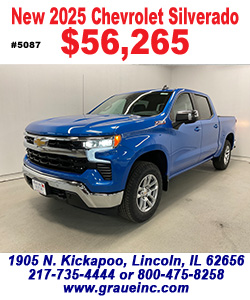Dozens of kids and adults in Gaza have starved to death in July as
hunger surges
[July 25, 2025]
By WAFAA SHURAFA, SARAH EL DEEB and LEE KEATH
DEIR AL-BALAH, Gaza Strip (AP) — Five starving children at a Gaza City
hospital were wasting away, and nothing the doctors tried was working.
The basic treatments for malnourishment that could save them had run out
under Israel's blockade. The alternatives were ineffective. One after
another, the babies and toddlers died over four days.
In greater numbers than ever, children hollowed up by hunger are
overwhelming the Patient's Friends Hospital, the main emergency center
for malnourished kids in northern Gaza.
The deaths last weekend also marked a change: the first seen by the
center in children who had no preexisting conditions. Symptoms are
getting worse, with children too weak to cry or move, said Dr. Rana
Soboh, a nutritionist. In past months, most improved, despite supply
shortages, but now patients stay longer and don't get better, she said.
“There are no words in the face of the disaster we are in. Kids are
dying before the world ... There is no uglier and more horrible phase
than this,” said Soboh, who works with the U.S.-based aid organization
Medglobal, which supports the hospital.
This month, the hunger that has been building among Gaza’s more than 2
million Palestinians passed a tipping point into accelerating death, aid
workers and health staff say. Not only children — usually the most
vulnerable — are falling victim under Israel’s blockade since March, but
also adults.
In the past three weeks, at least 48 people died of causes related to
malnutrition, including 28 adults and 20 children, the Gaza Health
Ministry said Thursday. That’s up from 10 children who died in the five
previous months of 2025, according to the ministry.

The U.N reports similar numbers. The World Health Organization said
Wednesday it has documented 21 children under 5 who died of causes
related to malnutrition in 2025. The U.N. humanitarian office, OCHA,
said Thursday at least 13 children's deaths were reported in July, with
the number growing daily.
“Humans are well developed to live with caloric deficits, but only so
far,” said Dr. John Kahler, Medglobal's co-founder and a pediatrician
who volunteered twice in Gaza during the war. “It appears that we have
crossed the line where a segment of the population has reached their
limits”
“This is the beginning of a population death spiral," he said.
The U.N.’s World Food Program says nearly 100,000 women and children
urgently need treatment for malnutrition. Medical workers say they have
run out of many key treatments and medicines.
Israel, which began letting in only a trickle of supplies the past two
months, has blamed Hamas for disrupting food distribution. The U.N.
counters that Israel, which has restricted aid since the war began,
simply has to allow it to enter freely.
Hundreds of malnourished kids brought daily
The Patient's Friends Hospital overflows with parents bringing in
scrawny children – 200 to 300 cases a day, said Soboh.
On Wednesday, staff laid toddlers on a desk to measure the circumference
of their upper arms — the quickest way to determine malnutrition. In the
summer heat, mothers huddled around specialists, asking for supplements.
Babies with emaciated limbs screamed in agony. Others lay totally
silent.
The worst cases are kept for up to two weeks at the center's 10-bed
ward, which this month has had up to 19 children at a time. It usually
treats only children under 5, but began taking some as old as 11 or 12
because of worsening starvation among older children.
Hunger gnaws at staff as well. Soboh said two nurses put themselves on
IV drips to keep themselves going. “We are exhausted. We are dead in the
shape of the living,” she said.
The five children died in succession last Thursday, Saturday and Sunday.
Four of them, aged 4 months to 2 years, had suffered gastric arrest:
Their stomachs shut down. The hospital no longer had the right nutrition
supplies for them.

[to top of second column]
|

Naima Abu Ful cooks for her family in their home in the Shati
refugee camp in Gaza City on Wednesday, July 23, 2025. (AP Photo/Jehad
Alshrafi)

The fifth — 4 1/2-year-old Siwar — had alarmingly low potassium
levels, a growing problem. She was so weak she could barely move her
body. Medicine for potassium deficiency has largely run out across
Gaza, Soboh said. The center had only a low-concentration potassium
drip.
The little girl didn’t respond. After three days in the ICU, she
died Saturday.
“If we don’t have potassium (supplies), we will see more deaths,”
she said.
A 2-year-old is wasting away
In the Shati Refugee Camp in Gaza city, 2-year-old Yazan Abu Ful’s
mother, Naima, pulled off his clothes to show his emaciated body.
His vertebrae, ribs and shoulder-blades jutted out. His buttocks
were shriveled. His face was expressionless.
His father Mahmoud, who was also skinny, said they took him to the
hospital several times. Doctors just say they should feed him. “I
tell the doctors, ‘You see for yourself, there is no food,'” he
said,
Naima, who is pregnant, prepared a meal: Two eggplants they bought
for $9 cut up and boiled in water. They will stretch out the pot of
eggplant-water – not even a real soup – to last them a few days,
they said. Several of Yazan’s four older siblings also looked thin
and drained.
Holding him in his lap, Mahmoud Abu Ful lifted Yazan’s limp arms.
The boy lies on the floor most of the day, too weak to play with his
brothers. “If we leave him, he might just slip away from between our
fingers, and we can’t do anything.”
Adults, too, are dying
Starvation takes the vulnerable first, experts say: children and
adults with health conditions.
On Thursday, the bodies of an adult man and woman with signs of
starvation were brought to Gaza City's Shifa Hospital, hospital
director Mohammed Abu Selmia said. One suffered from diabetes, the
other from a heart condition, but they showed severe deficiencies of
nutrients, gastric arrest and anemia from malnutrition.
Many of the adults who have died had some sort of preexisting
condition, like diabetes or heart or kidney trouble, worsened by
malnutrition, Abu Selmia said. “These diseases don’t kill if they
have food and medicine,” he said.

Deaths come after months of Israeli siege
Israel cut off entry of food, medicine, fuel and other supplies
completely to Gaza for 2 ½ months starting in March, saying it aimed
to pressure Hamas to release hostages. During that time, food
largely ran out for aid groups and in marketplaces, and experts
warned Gaza was headed for an outright famine.
In late May, Israel slightly eased the blockade. Since then, it has
allowed in around 4,500 trucks for the U.N. and other aid groups to
distribute, including 2,500 tons of baby food and high-calorie
special food for children, the Israeli Foreign Ministry said
Wednesday.
That is an average of 69 trucks a day, far below the 500-600 trucks
a day the U.N. says are needed. The U.N. has been unable to
distribute much of the aid because hungry crowds and gangs take most
of it from its trucks. Separately, Israel has also backed the Gaza
Humanitarian Foundation, which opened four centers distributing
boxes of food supplies. Hundreds of Palestinians have been killed
trying to reach the sites.
On Tuesday, David Mencer, spokesman for the Israeli Prime Minister’s
office, denied there is a “famine created by Israel” in Gaza and
blamed Hamas for creating “man-made shortages” by looting aid
trucks.
The U.N. denies Hamas siphons off significant quantities of aid.
Humanitarian workers say Israel just needs to allow aid to flow in
freely, saying looting stops whenever aid enters in large
quantities.
All contents © copyright 2025 Associated Press. All rights reserved |